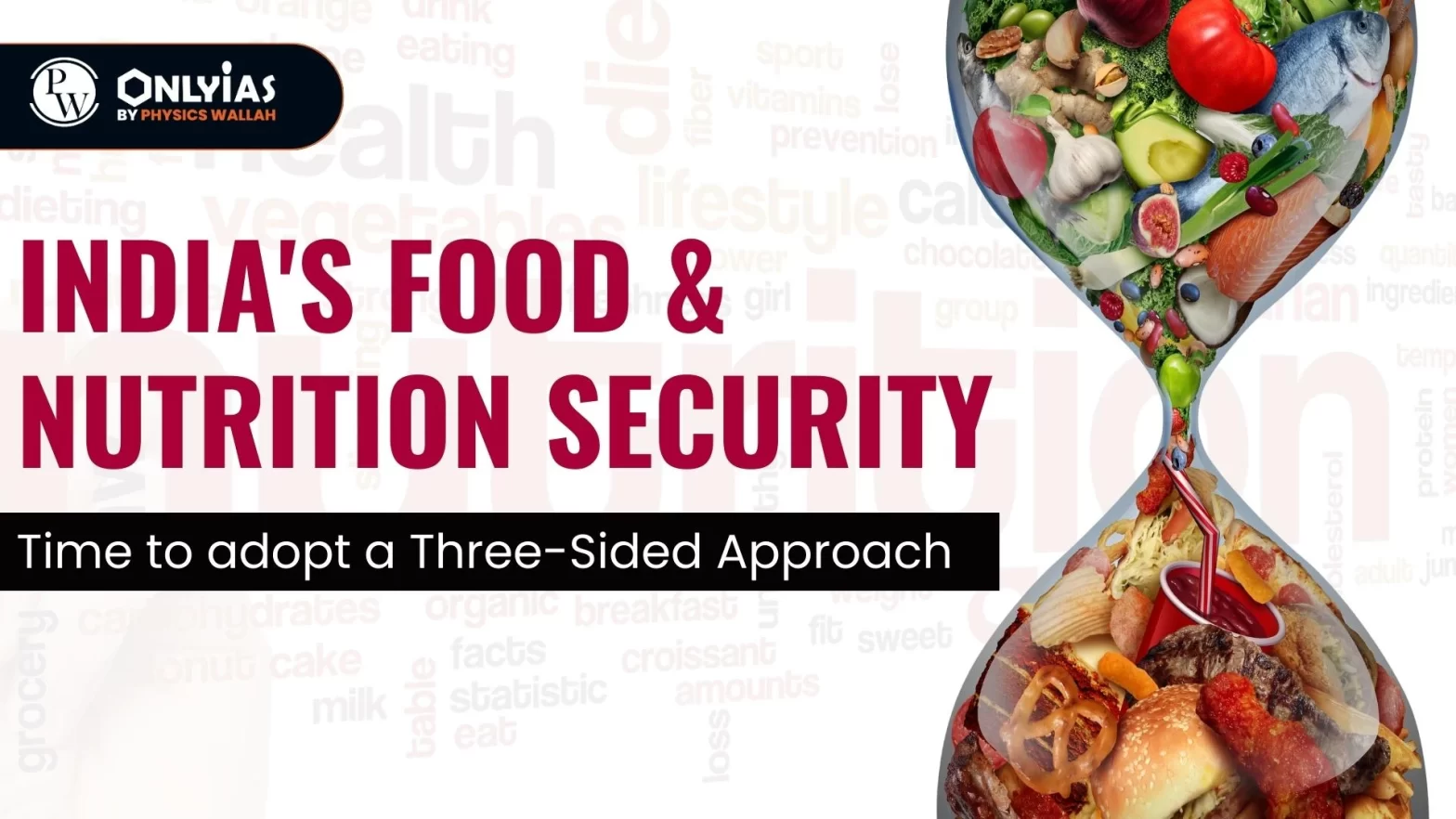Context:
- This article is based on an Editorial “An opportunity to recast India’s food system” which was published in the Hindu. October 16 is celebrated as World Food Day, which reminds the need to ensure nutrition security for all.
| Relevancy for Prelims: World Food Day, Nutrition Security, Three-Sided Approach.
Relevancy for Mains: World Food Day, Interconnectedness of nutrition, livelihoods & environment security and three-sided approach to tackle the interconnectedness concerns. |
Balancing Livelihoods and Environment for Nutrition Security in India
- Nutrition Challenge: India faces double burden, the coexistence of undernutrition and micronutrient deficiencies and obesity.
- Obesity: Due to imbalanced diets and sedentary lifestyles, 24% of adult women and 23% of adult men are now obese.
- As per National Family Health Survey, 2019-21, 35% of children are stunted, and 57% of women and 25% of men are anaemic.
- Livelihood Concern: Farm incomes are insufficient to support marginal and small farmers.
- Vulnerability to Environment: Depleting natural resources and changing climate are making India’s food production highly vulnerable.
- As per 2023 soil health survey, almost half the cultivable land in India has become deficient in organic carbon (an essential indicator of soil health).
- Groundwater: The largest source of irrigation is rapidly declining due to over-expoitation. Example: In Punjab, more than 75% of the groundwater is over-exploited.
Food & Nutrition Security; Time to adopt a Three-Sided Approach
- Shifting of Consumer Demands: Need to be shifted towards healthy and sustainable diets.
- Corporations, civil societies and the health community could partner with social media influencers to promote locally-grown, nutritious, healthier, and sustainable food.
- The Public Distribution System, mid-day meals, railways catering, religious institutions like Tirumala temple can also help to achieve the desired results.
- Support to Farmers: By motivating them to adopt remunerative and regenerative agricultural practices.
- Need to increase funding of associated schemes like the National Mission on Natural Farming.
- Need to broaden up agro-ecological practices such as agroforestry, conservation agriculture, precision farming, etc.
- Need to move from input subsidies to direct cash support to farmers per hectare of cultivation.
- Approach by Middlemen: Prioritizing direct procurement from farmers, incentivise procurement of sustainably harvested produce, and implement well-established approaches such as fair trade.
- Shift farm-to-fork value chains towards more sustainable and inclusive ones.
- Need to promote young agri-tech enterprises such as DeHaat and Ninjacart.
- Need to enable trading of produce between Farmer Producer Organizations (FPOs) to ensure a greater value share for farmers.
Also read: National Multidimensional Poverty Index: A progress of Review 2023
Conclusion:
Shifting an entire food system is a challenging task but with ambitions and determinations and by using the above mentioned three-sided approach, India can successfully overcome the food & nutrition security challenges.
| Prelims Question (2018)
With reference to the provisions made under the National Food Security Act, 2013, consider the following statements:
1. The families coming under the category of ‘below poverty line (BPL)’ only are eligible to receive subsidies food grains.
2. The eldest woman in a household, of age 18 years or above, shall be the head of the household for the purpose of issuance of a ration card.
3. Pregnant women and lactating mothers are entitled to a ‘take-home ration’ of 1600 calories per day during pregnancy and for six months thereafter.
Which of the statements given above is/are correct?
(a) 1 and 2
(b) 2 only
(c) 1 and 3
(d) 3 only
Ans: (b) |
![]() 20 Oct 2023
20 Oct 2023

